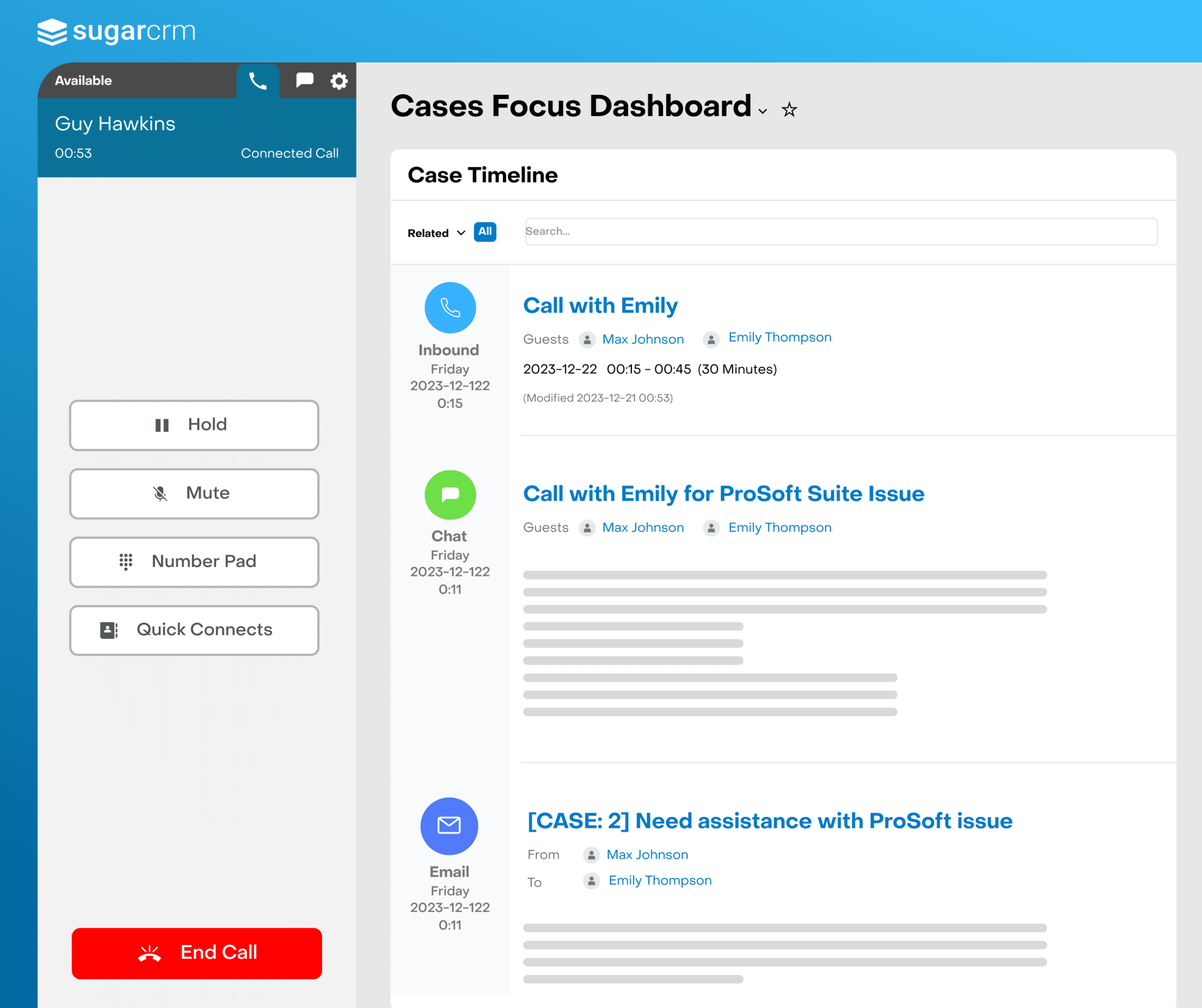Implementation Made Easy: 4 Expert Tips on How to Prepare for Your CRM Migration
In today’s business environment, many companies and IT departments are starting to take a harder look internally to make sure the people, processes, and technology behind making their companies run are helping rather than hindering their operations.
As an organization, it is essential that you have a clear well-laid strategy and an idea of what objectives you would like to fulfill with a CRM migration. However, the truth remains, implementing new processes is hard and, honestly, some of the most challenging work that teams can do—some teams may struggle with change itself due to its risky and unfamiliar nature, and other teams struggle with the new processes themselves because they can’t agree on the best way to improve it operational-wise. But the hardest part is, even if you can define a new process and make some headway on changing people’s mindsets, there is still an uphill battle when it comes to implementing key changes and turning plans into action.
To take a deeper look into what it takes to create a hassle-free migration, we recently sat down with Ashley Simon, Senior Admissions Counselor at Sofia University, where she spoke about her experience switching to SugarCRM and how the implementation process went for her and her organization.
Below are four pieces of advice she gave us on ensuring your implementation process goes as smoothly as possible.
4 Expert Tips on How to Prepare for Your CRM Migration
Clean Up Your Data
A common roadblock many salespeople and marketing professionals experience in the implementation process is organizational quicksand. And by quicksand, I mean being buried by an ever-growing, uncontrollable, gigantic pile of irrelevant, erroneous and outdated customer data. To dig yourself out of trouble before it’s too late, you want to make data cleaning (aka data cleansing) a habit that sticks, especially as you prepare to switch CRM vendors.
Data quality is the most crucial element of any business intelligence strategy. Developing systems to collect and distribute information is one thing, but if that data becomes corrupted, it becomes useless. No matter what niche the business is in or what kind of data they collect, data cleansing will be a requirement.
Today, there’s plenty of information on any company in the world. You trust this information to uncover insights that enable you to effectively reach customers and prospects at the right time and with the right channel. Usually, this information lives in your CRM system, so you can consult the profile of any account whenever you need it.
Bad data also causes longer sales cycles due to inefficiencies and time-consuming administrative tasks. Without a healthy CRM, salespeople will have difficulties finding new prospects or will spend time on outdated opportunity information (Yes, that company was a good prospect… six months ago!).
Clean data boosts a business’s ability to make decisions because management can depend on reports to be accurate. If data has been corrupted or is oversaturated with irrelevant data, then those same reports are not going to be as accurate. Data cleansing cleans up the clutter and will provide businesses with the data needed to make better, more informed decisions.
Pre-Map Your Data
At its most basic level, data mapping involves taking various sets of data and mapping them to their correct destination within your CRM system. Typically, companies who do this make their data more accessible and structured, not only for their teams but also for their customers.
For any company that truly relies on data, it is essential to outline the interconnections between different data elements. Data that is poorly mapped or not mapped at all will eventually lead to issues downstream as data travels from end to end within your organization. While the process of mapping data dependencies can be a daunting thought for businesses, it’s an absolutely crucial step in the implementation process since their decision-making relies heavily on accurate data.
Think of identifying the connections in your data as something your future self will appreciate. Nobody is perfect. There will be times when the data gets corrupted, no matter how perfect we think our current solution is. And you know what? That’s okay. Mapping out your data dependencies ensures that when the data does get corrupted, it won’t cause bigger problems later on. Take the time to map out your data dependencies. It will save you a lot of time trying to figure out which other systems were affected by the failure. When done correctly, data mapping ensures data mapping ensures your organization’s data is not only correct but also reliable.
Now that data mapping has become a common activity in the business world, the necessity of using automated and powerful technologies has never been more important. Modern tools can handle your pre-processing needs and give better results than human intervention, which can be error-prone and subjective at times.
Don’t Automate Broken Processes; Build Out Business Process Management
Understand your current pain points and address them before implementation. This advice is pretty simple, but many business owners do not practice this. If you don’t know what you need to do, doing that unknown thing faster via automation is just going to waste more time and resources, more quickly.
At its core, BPM is all about understanding how work gets done in your organization so that you can make improvements where necessary. By mapping out each step of a process, BPM provides visibility into areas for improvement that might not have been apparent before.
But BPM isn’t just about streamlining existing processes; it’s also about creating new ones from scratch. When building new processes or refining old ones with BPM tools, businesses must consider how each element fits together while keeping their overall goals in mind.
By implementing BPM practices in your organization, you’ll be able to identify inefficiencies more easily and streamline workflows across departments. This leads to improved performance metrics over time as well as cost savings through reduced waste and errors.
To achieve this level of optimization, whether it be in IT or for business processes, the first step is to gain a clear understanding of what needs to be changed. This involves identifying the tasks that make up a process and removing any unnecessary elements that don’t contribute to the objectives or are there simply because ‘that’s the way we’ve always done it.’ Optimization may be about making IT and the business go faster; but it starts with enabling IT and the business to go smarter.
Make Sure Your New Platform Is Customizable and Offers Out-of-the-Box Options as Well
If you’re looking to buy software for your business, you might struggle to find a solution that does exactly what you need it to do. The more complex the need, the less exact the fit. But, your final decision shouldn’t be based on ‘customization or configuration’, it should be ‘customization and configuration’.
When migrating to a new platform, make sure your new vendor can prioritize customizability and provide users with out-of-the-box options. These features ensure that the platform can adapt to individual needs and offer immediate functionality to users.
While no one CRM system is made to solve all the needs for everyone out-of-the-box, knowing the capabilities and limitations of your systems is fundamental in order to avoid both high customization costs and rigid pre-set templates. The right CRM will let you have your cake and eat it too.
The Path to CRM Implementation Success
Introducing new processes and protocols throughout the entire organization is a challenge, but in order to make them last, you must ensure that everyone is on board and establish a system to enhance your company’s alignment. By following these steps, you can lay the groundwork for effectively creating and putting into action any new procedure in your company.
Implementing new processes and procedures across the company is one thing, but to make it stick, you need to get everyone on board and have a system in place to continuously improve company alignment.
Interested in learning more about how Sofia University was able to streamline their tech stack and increase user adoption via a seamless implementation? Watch the full conversation here, How Sofia University Delivers Human Experiences with CRM + Marketing Automation.
Or, want to learn more about the topic? Visit our Blog section! We have many resources discussing it, or contact our team!


